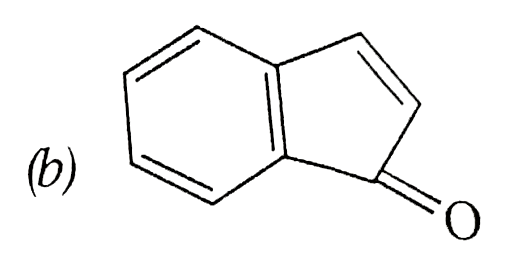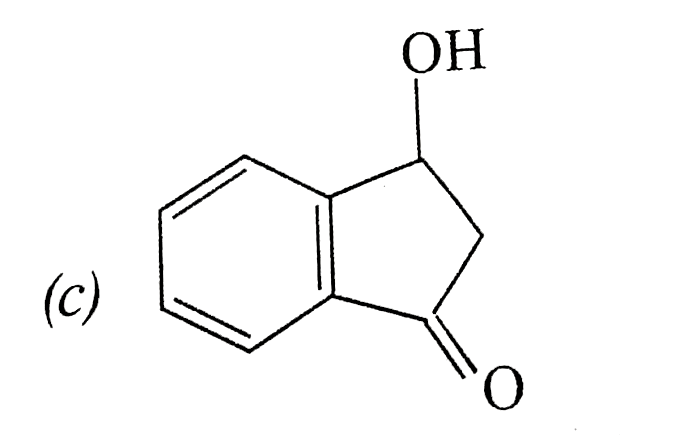Compound X on reaction with followed by Zn/ H2O gives formaldehyde and 2 methylpropanal as products. The compound X is :
3-Methylbut-1-ene
2-Methylbut-1-ene
2-Methylbut-2-ene
Pent-2-ene
To determine the compound X that reacts with O2 followed by Zn/H2O to yield formaldehyde and 2-methylpropanal, we can follow these steps:
1. Identify the Products:
- The products of the reaction are formaldehyde (HCHO) and 2-methylpropanal (C4H8O).
- Formaldehyde has one carbon atom, while 2-methylpropanal has four carbon atoms (C4H8O).
2. Understand the Reaction Type:
- The reaction involves ozonolysis, which typically occurs with alkenes.
- Ozonolysis cleaves the double bond in alkenes to form carbonyl compounds (aldehydes or ketones).
3. Construct the Alkene:
- Since ozonolysis of an alkene leads to the formation of two carbonyl compounds, we can infer that the alkene must have a structure that, when cleaved, yields one formaldehyde and one 2-methylpropanal.
- The presence of 2-methylpropanal indicates that the alkene must have a branched structure.
4. Determine the Structure of Compound X:
- Let's denote the alkene as having the structure that can produce the mentioned products.
- If we consider an alkene with a double bond between the first and second carbon (C=C), and a methyl group on the third carbon, we can represent it as:
- CH2=C(CH3)CH2CH3 (which is 3-methylbut-1-ene).
5. Verify the Products:
- When this alkene undergoes ozonolysis, the double bond breaks, and we can expect the following:
- One fragment will produce formaldehyde (HCHO).
- The other fragment will yield 2-methylpropanal (C4H8O).
- This confirms that the structure of the alkene is correct.
6. Conclusion:
- Therefore, the compound X is 3-methylbut-1-ene.
Final Answer:
The compound X is 3-methylbut-1-ene.
- The products of the reaction are formaldehyde (HCHO) and 2-methylpropanal (C4H8O).
- Formaldehyde has one carbon atom, while 2-methylpropanal has four carbon atoms (C4H8O).
- The reaction involves ozonolysis, which typically occurs with alkenes.
- Ozonolysis cleaves the double bond in alkenes to form carbonyl compounds (aldehydes or ketones).
- Since ozonolysis of an alkene leads to the formation of two carbonyl compounds, we can infer that the alkene must have a structure that, when cleaved, yields one formaldehyde and one 2-methylpropanal.
- The presence of 2-methylpropanal indicates that the alkene must have a branched structure.
- Let's denote the alkene as having the structure that can produce the mentioned products.
- If we consider an alkene with a double bond between the first and second carbon (C=C), and a methyl group on the third carbon, we can represent it as:
- CH2=C(CH3)CH2CH3 (which is 3-methylbut-1-ene).
- When this alkene undergoes ozonolysis, the double bond breaks, and we can expect the following:
- One fragment will produce formaldehyde (HCHO).
- The other fragment will yield 2-methylpropanal (C4H8O).
- This confirms that the structure of the alkene is correct.
- Therefore, the compound X is 3-methylbut-1-ene.
The compound X is 3-methylbut-1-ene.
Topper's Solved these Questions
- NEET 2022BOOK - NEET PREVIOUS YEAR (YEARWISE + CHAPTERWISE)CHAPTER - NEET 2022EXERCISE - Section - A (Chemistry)
25 Videos
- NEET 2021BOOK - NEET PREVIOUS YEAR (YEARWISE + CHAPTERWISE)CHAPTER - NEET 2021EXERCISE - QUESTION
50 Videos
- NEET 2023BOOK - NEET PREVIOUS YEAR (YEARWISE + CHAPTERWISE)CHAPTER - NEET 2023EXERCISE - Question
50 Videos
Similar Questions
Treatment of benzene with CO/HCl in the presence of anhydrous AlCl3/CuCl followed by reaction with Ac2O/NaOAc gives compound X as the major product. Compound X upon reaction with Br2/Na2CO3, followed by heating at 473 K with moist KOH furnishes Y as the major product. Reaction of X with H2/Pd−C, followed by H3PO4 treatment gives Z as the major product.
The compound Y is
View SolutionTreatment of benzene with CO/HCl in the presence of anhydrous AlCl3/CuCl followed by reaction with Ac2O/NaOAc gives compound X as the major product. Compound X upon reaction with Br2/Na2CO3, followed by heating at 473 K with moist KOH furnishes Y as the major product. Reaction of X with H2/Pd−C, followed by H3PO4 treatment gives Z as the major product.
The compound Z is
View Solution
Knowledge Check
An alkene (A)C16H16 on ozonolysis gives only one product (B)(C8H8O). Compound (B) on reaction with NH2OH followed by reaction with H2SO4,Δ gives N - methyl benzamide the compound 'A' is -
A B
B C
C D
D
Treatment of benzene with C∅HCl in the presence of anhydrous AlCl3/CuCl followed by reaction with Ac2∅NaOAc gives a compound X. Reaction of X with H2/Pd/c followed by treatment with H3PO4 gives another compound Y. The compound Y is :
A B
B C
C D
D
Toluene on reaction with CrO3 and Ac2O gives benzaldehyde as the main product. The intermediate compound formed in the reaction is:
Aa.PhCH2OHBb.PhCH(Oac)2Cc.PhCH2OacDd.PhCH(OH)2
Compound 'X' reacts with alcoholic KOH to yield compound ‘Y’ which on ozonolysis followed by reaction with ZnH2O gives methanal and propanal. Compound ‘X’ is
View SolutionCompound 'X' on heating with Zn dust gives compound 'Y' which on treatment with O3 followed by reaction with Zn dust gives propionaldehyde. The structure of 'X' is
View SolutionA compound 'X' on ozonolysis followed by reduction gives an aldehyde, C2H4O and 2-butanone. Compound 'X' is:
View SolutionA compound 'X' on ozonolysis followed by reduction gives an aldehyde, C2H4O and 2-butanoic. Compound 'X' is:
View SolutionAn alkene A on reaction with O3 and Zn−H2O gives propanone and ethanal in equimolar ratio. Addition of HCI to alkene A gives B as the major product. The structure of product B is
View Solution
